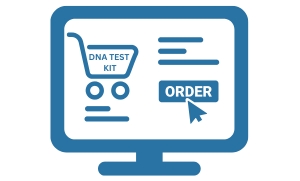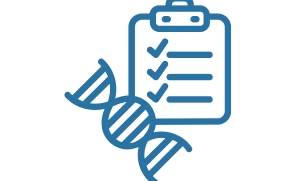Browse Our Ancestry DNA Tests
Forensics Canada Inc.(FCI) offers a comprehensive range of ancestry DNA testing in Toronto Canada
GPS Origins Ancestry DNA Test
Discover the origins of your heritage with our ancestry test. Trace your lineage back to specific countries, cities, or even islands where your ancestors once lived. Start your journey to uncover your roots today.
Maternal Lineage Test
How much do you truly know about your maternal lineage and ancient ancestry? If you’re ready to explore your deep maternal roots and trace your origins back thousands of years, a Maternal Lineage Ancestry DNA Test is exactly what you need. It’s the ultimate tool for uncovering where your story began.
Learn More…
Paternal Lineage Test
How much do you truly know about your ancestry and paternal lineage? Our Paternal Lineage Y-STR DNA Test allows you to trace your father’s ancient roots through a scientific analysis of your patrilineal heritage. Discovering the deeper layers of your family history has never been easier with advanced DNA testing.
Learn More…
How Ancestry DNA Testing Works
Three Steps, Its Simple

ORDER TEST KIT
Order Ancestry DNA Test ONLINE.We will ship you DNA sample collection kit on the address provided in the online order in 2 to 3 days. Kits can be shipped to different locations

COLLECT AND SEND SAMPLES
Follow kit instructions to collect DNA samples. Make sure all the sample envelopes are labelled and mail them back to us on the address provided in instructions

RESULTS BY EMAIL
In approximately 4-6 weeks, we will send the results of your test by email to the email address (s) on file. We will not discuss/convey results over the phone.
Ancestry DNA can trace your genetic heritage and family tree back hundreds to thousands of years, depending on what you’re looking at:
1. DNA Ethnicity Estimates
-
Time Depth: Up to 1,000+ years ago
-
What it shows: Where your ancestors likely lived and how your DNA matches current populations.
-
Limitations: It’s an estimate based on modern reference populations, so it gives broad regional insights, not exact ancestors.
Maternal and Paternal Lineages (if available)
-
Time Depth: Up to tens of thousands of years ago
-
What it shows: Your haplogroups, which are ancient DNA signatures passed down from your mother (mtDNA) and father (Y-DNA for males).
-
Use: Helps trace ancient migration patterns, like if your paternal line came from the Middle East or Northern Europe.
Family Tree & Records via Ancestry.com
-
Time Depth: Typically 150–300 years (5–10 generations)
-
What it includes: Census records, birth/death/marriage records, immigration documents, and more.
-
Limitations: Depends on how much data you or others have added and where your ancestors lived (some countries have better records than others).
Summary:
| Type of Info | How Far Back It Goes |
|---|---|
| Ethnicity Estimate | ~1,000 years |
| DNA Matches | Up to 5–8 generations |
| Haplogroups (mtDNA/Y) | Thousands of years |
| Family Tree Records | 150–300 years (or more) |
Yes, two siblings can have different AncestryDNA results—and that’s completely normal.
Why it happens:
Siblings each inherit 50% of their DNA from each parent, but not necessarily the same 50%. The specific combination of genes passed down is random.
What this means:
-
One sibling might inherit more DNA from, say, a grandparent of Italian descent, while the other gets more from a grandparent of Irish descent.
-
As a result, their ethnicity estimates can differ, sometimes significantly, even though they share the same parents.
But some things stay consistent:
-
Siblings will share a high amount of DNA, typically around 50%.
-
They will appear as close matches (siblings) in the DNA match section of AncestryDNA.
Example:
One sibling might be 30% Scandinavian and 20% West African, while another is 25% Scandinavian and 25% West African.
Ancestry DNA tests are generally quite accurate for what they are designed to do, but their accuracy varies depending on the specific feature:
1. Ethnicity Estimates
-
Accuracy: Approximately 70–95%, depending on the region.
-
Details: The test compares your DNA to reference samples from various populations. It’s more accurate in well-represented regions (like Europe) and less precise in underrepresented areas (like parts of Africa or Asia).
2. DNA Matches (Genetic Relatives)
-
Accuracy: Very high for close relatives.
-
Details: First to third cousins are usually detected with over 99% accuracy. The farther the relation, the less precise the estimate becomes.
3. Maternal & Paternal Lineage (mtDNA and Y-DNA)
-
Accuracy: High for deep ancestry tracing.
-
Details: These tests trace unbroken maternal or paternal lines and are based on specific DNA segments (mtDNA and Y-DNA). They’re excellent for understanding ancient origins and haplogroups, but not useful for detecting recent relatives.
Important Considerations:
-
Not a diagnostic tool: It doesn’t test for health conditions unless specified.
-
Reference panels vary: Different companies have different databases, which can affect your ethnicity results.
-
Updates: Results may change slightly over time as databases grow and algorithms improve.
Yes, AncestryDNA does tell you your ethnicity—but it’s more accurate to say it gives you an ethnicity estimate based on your genetic markers.
Here’s what you get:
-
Ethnicity Breakdown: A percentage-based estimate showing what regions of the world your DNA comes from (e.g., 40% Irish, 25% West African, 15% Scandinavian).
-
Regional Detail: It includes over 1,000+ global regions, and may identify more specific communities within countries.
-
DNA Communities: These show likely migration patterns of your ancestors and can highlight historical population movements (e.g., Southern Italians to New York).
How it works:
AncestryDNA compares your DNA to a large database of genetic samples from known regions to find similarities. The result is a probabilistic estimate, not an exact measurement.
Important: These ethnicity estimates are most accurate for people from well-sampled regions (like Europe and North America) and less precise in areas with limited reference data (like parts of Asia or Indigenous populations).
